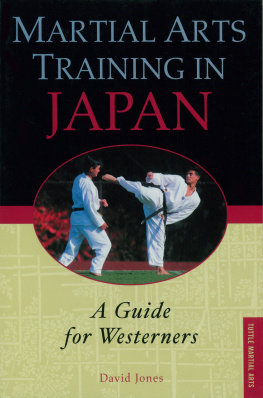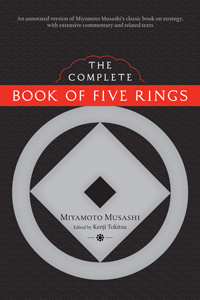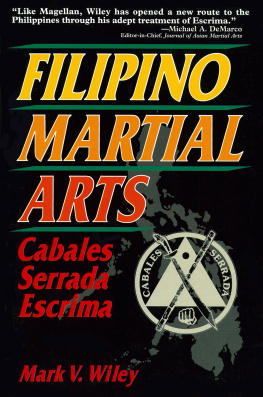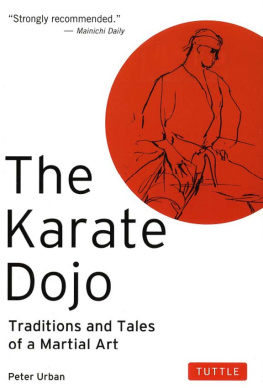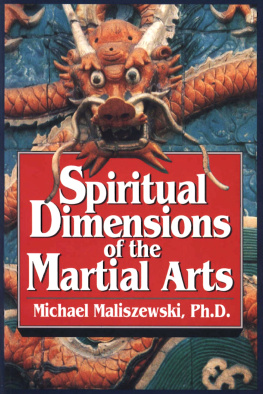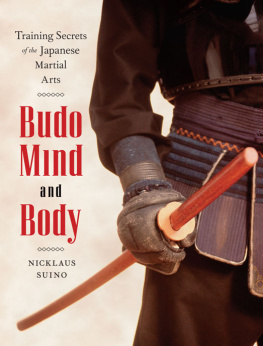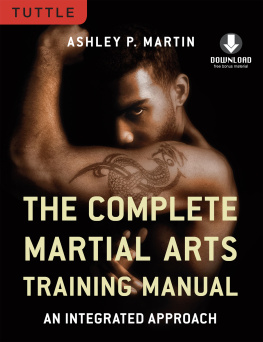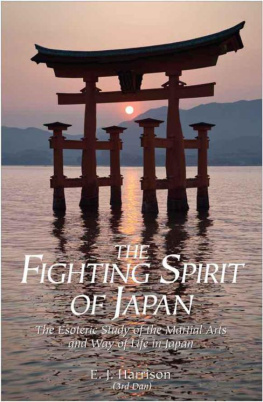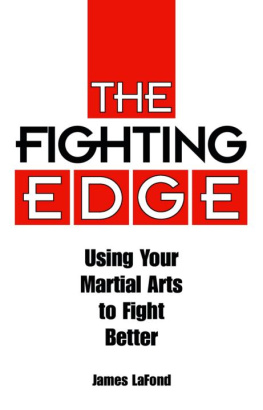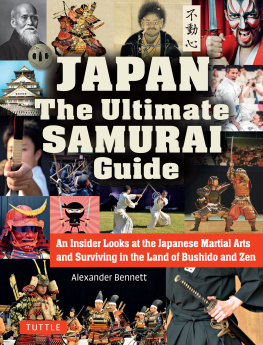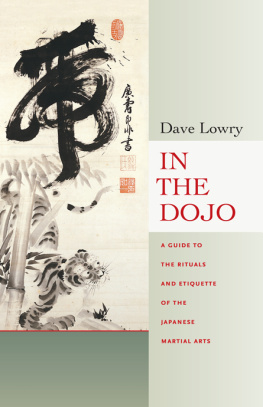Acknowledgments
I wish to thank my wife, Jane M. Jones, for editorial assistance and support during the writing of this book; and Professor Thomas Cauley, United States Director of Sakugawa Koshiki Shorinji Ryu Karatedo, for his Preface and timely comments on the manuscript; and Dennis Hooker, Junko and Forrest Gillespie, Steve Fasen, and Wayne Van Horne for reading early drafts and offering their expert and timely comments. Finally, I wish to express deep gratitude to Mitsugi Saotome Shihan, Headmaster of the Aikido Schools of Ueshiba for consenting to be interviewed for this book. In the end, of course, final responsibility for the content of this work must, for better or for worse, rest with me.

Bibliography
Finn, Michael. Iaido: The Way of the Sword. London: Paul H. Crompton Ltd., 1982.
Leggett, Trevor. Zen and the Ways. Tokyo: Tuttle Publishing, 1978.
Lovret, Frederick J. The Way and the Power. Boulder, Colorado: Paladin Press. 1987.
Nitobe, Inazo. Bushido: The Warriors Code. Boston: Tuttle Publishing, 1979.
Random, Michel. The Martial Arts. London: Peerage Books, 1984.
Ueshiba, Morihei (trans. John Stevens). Budo. New York: Kodansha International, 1991.
Williams, Bryn (ed.). Martial Arts of the Orient. London: Hamlyn, 1975.
Wilson, William S. The Ideals of The Samurai: Writings of Japanese Warriors. Burbank, California: Ohara Publications, Inc., 1982.
Yampolsky, Philip B. (ed.). Zen Master Hakuin: Selected Writings. New York: Columbia University Press, 1971.

Karatedo: The Way of the Empty Hand
Karatedo has a wonderful story of origin. The orthodox account is that karatedo originated in India. The martial arts of contemporary India at this point in their evolution, however, look much more like kung fu, with its complex animal forms and great variety of exotic weaponry, than the austere art of modern karatedo. Kung fu does not, in fact, point to a particular type of Chinese martial art but, as the literal translation of kung fu (effort) suggests, to any skill derived over time through hard training. It may be said that kung fu is at least partially derived from India and that later karatedo evolved from an ancient branch of kung fu.
The ancient story tells of Bodhidharma (Japanese: Daruma; Chinese: Tamo), the twenty-eighth patriarch of Buddhism, and his arrival in China in the sixth century A.D. on a mission to revitalize Chinese Buddhism. In the company of his Sherpa guides (traditionally described as eighteen in number), Bodhidharma briefly visited with Emperor Wu and then moved into residence at the monastery of Shaolin-szu (Japanese: Shorinji), Temple of the Young Pine Trees. (Some versions of the story claim that he founded the famous Shaolin temple.) Finding the resident monks too weak to follow his rigorous monastic regimen, he taught them a style of martial art which he derived from the Kshatriya (warrior) caste of India, combining an emphasis on strong diaphragm breathing, characteristic of Indian yoga, with an evolving admixture of the local kempo, or Chinese methods of unarmed combat.
The connection between Buddhism and warrior arts seems contradictory at first glance. However, it should be remembered that Siddhartha Gautama, the Buddha, was a member of the warrior caste of India and, in fact, won his royal bride in an archery contest.
Over time, the Shaolin martial arts adapted to local conditions and it is suggested in the common explanation that karatedo developed in the south of China, where the short, stocky agricultural workers with their strongly developed arms and upper bodies developed the Shaolin art in a direction that would come to be recognized as contemporary karatedo.
The story then moves to Okinawa, the main island of the Ryukus, the chain of islands that stretches south from Japan to Taiwan. Okinawa had long been a point of contact between Chinese and Japanese cultures. It was here that the te, or strong hand techniques (striking, punching) which had evolved as a regional style in Okinawa over centuries, began to mix and blend with the kempo of China with its more rounded and flowing techniques. The evolving combination was called Tang Hand after the great Chinese dynasty that had such an impact on the development of Japanese culture. The Chinese characters for Tang Hand were later read as Empty ( kara ) Hand (te).
The early karatedoka of Okinawa developed, in addition, the art of kobudo as they came into continual hostile contact with Japanese samurai clans (particularly the Satsuma clan of southern Kyushu) who raided Okinawa for countless generations. To this day, one sees kobudo weapons, such as the nunchaku, sai, tonfa, and kama, in traditional karate dojo.
In 1917 Funakoshi Gichin, a renowned Okinawan educator, was invited by the Japanese Ministry of Education to give public demonstrations of karatedo in the main islands of Japan. His first trip was so successful that he returned in 1923 to take up permanent residence. In 1936 he inaugurated the first karate dojo in the main islands of Japan. It was called Shotokan, or Shotos House. The name came from Funakoshi Senseis pen name, Shoto, which means wind through the pine trees. Today, Shotokan karatedo continues as one of the major karatedo styles.
Influenced by Professor Funakoshi, martial arts practitioners established dojo for various karatedo styles. Okinawan Miyagi Chojun founded the Goju style. Yamaguchi Gogen, a Japanese student of Master Miyagi, created his own version of the Goju style. Otsuka Hironori combined jujutsu with the Tang Hand and arrived at his Wado style. Around this time the Tang Hand reading was dropped and the Empty Hand adopted, perhaps because of growing Japanese nationalistic sentiments against China. Although some of the old masters of Okinawa resented the name change, it fit not only the nationalism of the times but also the Zen thrust of karatedo. Master Funakoshi explained it as follows (Williams, 1975:132):
As a mirrors polished surface reflects whatever stands before it and a quiet valley carries even small sounds, so must the student of karate render his mind empty of selfishness and wickedness in an effort to react appropriately to anything he might encounter. This is the meaning of kara or empty in karate.
Japanese karatedo has come to incorporate philosophies important to the Japanese. Whereas modern Japanese karatedoka may philosophize about Zen, and no mind, and satori (enlightenment), the Okinawan stylist, for the most part, was simply trying to hit and kick as hard as possible and incorporated philosophical underpinnings such as ki (intrinsic energy) and hara (the emotional, spiritual and physical center of the body) to assist in that primary objective.
The later history of Japanese karatedo is well documented because it is relatively modern; however, the orthodox origin tale involving Bodhidharma, the Shaolin temple, and the Sherpa guides may be wild history, as one of my Japanese teachers called it. I was first introduced to this concept while being taught the oral tradition of the origin of the Komuso Zen sect.
One afternoon, Hanada Shihan sat me down in the zendo (meditation hall) of Saikoji and told me the story of the founder of Komuso Zen, a wild Chinese monk named Pu-hua (known as Fuke in Japanese). Fuke was a compatriot of the great Chinese master Lin-chi (Japanese: Rinzai), the inspirational source of the Rinzai sect of Zen Buddhism that developed in Japan during the Kamakura period.
After setting the stage, Hanada Shihan, obviously enjoying himself, told the story of Fuke. Rinzai loved Fuke although Fuke was considered by his fellow monks to be crazy. He slept in the fields or in the barns, rarely washed, took no disciples, and was constantly interrupting Rinzai at his important work as head of a large Tang-dynasty Buddhist monastery. For example, one day Rinzai had invited some of the local dignitaries to the monastery for a pleasant meal. As the mayor and his staff enjoyed the fine food and stimulating conversation of Rinzai, Fuke showed up uninvited. He turned over Rinzais table and addressed the dignitaries with, Ho-yang is a new bride. Mu-ta is a Chan granny, and Rinzai is a young menial, but he has the eye. He then left the room. The irate guests raged against the lout Fuke, but Rinzai only said, There goes a truly enlightened being.

